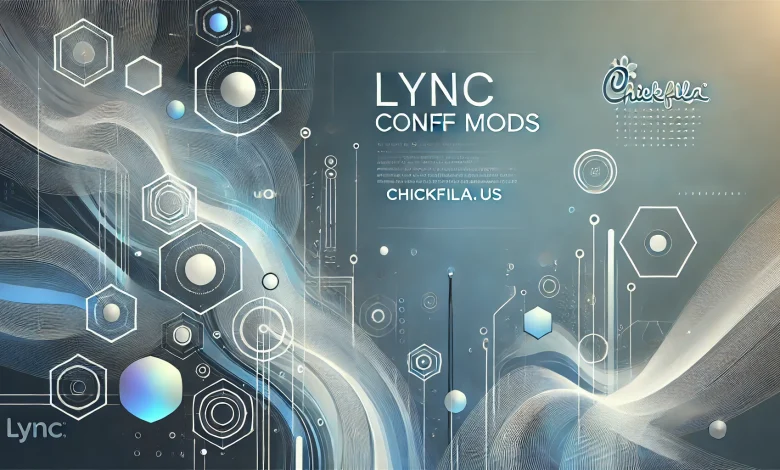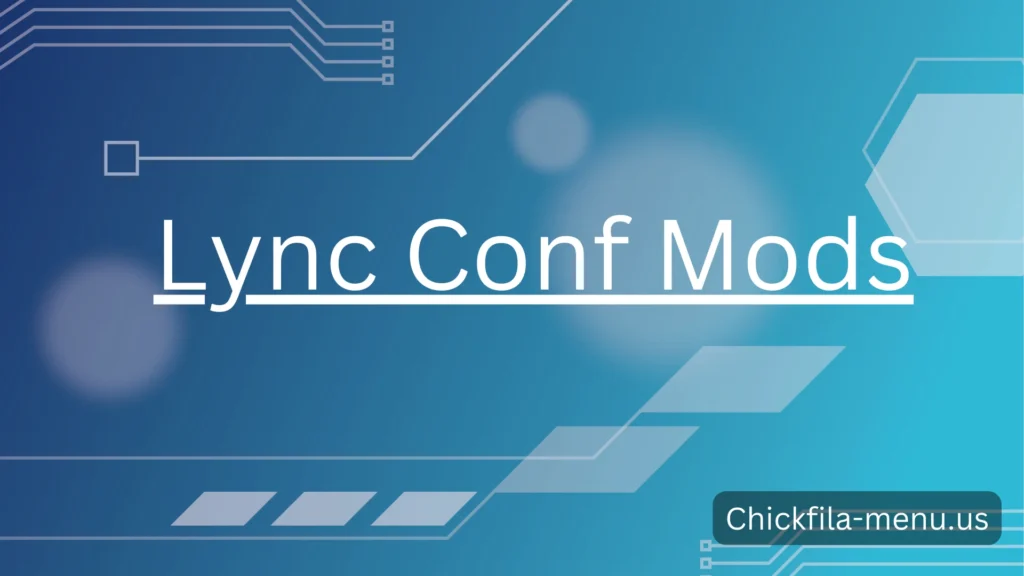Mastering Lync Conf Mods: The Ultimate Guide to Conference Modifications in Microsoft Lync

If you’ve ever dabbled with Microsoft Lync (now known as Skype for Business), you’ve likely heard about Lync Conf Mods—short for “Lync Conference Modifications.” Whether you’re an IT admin managing enterprise communications or just a curious tech tinkerer, Lync Conf Mods can take your conferencing game to the next level. Let’s unpack everything you need to know about it.
What Are Lync Conf Mods and Why Should You Care?
So, first things first—what exactly are “Lync Conf Mods”? Simply put, they’re tweaks or configurations applied to Lync Server or client settings that control how conferencing features behave. Think of them like cheat codes or configuration hacks (but legit!) Lync Conf Mods that can help you fine-tune Lync’s conferencing capabilities to better fit your organization’s or team’s needs.
Lync, by default, offers a pretty solid conferencing experience—voice, video, screen sharing, whiteboarding, and all that good stuff. But as with most things Microsoft, the real power lies in customization. Conf Mods let you modify conference behavior such as default lobby settings, who can present, whether anonymous users can join, or even Lync Conf Mods how audio and video settings are handled.
These modifications are especially useful in larger enterprise environments where standard out-of-the-box settings don’t always cut it. Different departments might have different security needs or presentation styles, and Conf Mods give IT the flexibility to cater to those nuances.
Moreover, being able to apply and manage Lync Conf Mods properly can improve user experience, reduce support tickets, and even tighten up compliance and security. So yeah, if you’re involved with Lync, Conf Mods are worth learning.
Common Types of Lync Conference Modifications
Now that we’ve established why Conf Mods matter, let’s talk about what kinds of modifications you can actually make. This is where things start to get interesting—and potentially powerful.
One of the most common mods is changing the default meeting policy. For example, you might want to ensure that only internal users can create conferences, or that anonymous users are always placed in a lobby until admitted by the host. These kinds of settings are usually configured using PowerShell, specifically the Set-CsConferencingPolicy or Set-CsMeetingConfiguration commands.
Another common area of modification involves presenter and attendee roles. You can set rules that automatically assign all internal users as presenters or restrict presentation capabilities to only the meeting organizer. This is super handy in executive meetings or all-hands sessions where you want to limit disruptions.
Then there’s the dial-in conferencing side of things. You might want to customize audio conferencing numbers, enable or disable PSTN dial-in, or change the language prompts. These are all valid use cases for Conf Mods and can make a huge difference in user adoption and satisfaction.
And let’s not forget video and screen sharing controls. You might choose to disable video for bandwidth management or require approval before screen sharing begins. These might seem like small tweaks, but they can dramatically shape the meeting environment.
How to Apply Lync Conf Mods: A Beginner-Friendly Approach

Okay, you’re sold on the idea of Lync Conf Mods. But how do you actually make these changes? The good news is, it’s not as intimidating as it sounds—especially if you’re comfortable using PowerShell and the Lync Server Management Shell.
Most modifications are applied using PowerShell commands. For example, to change the default conferencing policy to allow anonymous users but place them in a lobby, you’d use a command like:
powershell
CopyEdit
Set-CsConferencingPolicy -Identity Global -AllowAnonymousParticipants $true -EnableLobby $true
Easy, right? The tricky part is understanding what each parameter does, but Microsoft has solid documentation—and the community forums are gold mines for real-world use cases and troubleshooting tips.
Another route is using the Lync Control Panel, which provides a more GUI-based interface. It doesn’t offer every possible setting, but it’s a good starting point for those who prefer clicking over typing.
Remember to always test changes in a staging environment before rolling them out to production. This is especially important if you’re modifying global settings, as a misstep could affect hundreds (or thousands) of users.
Also, keep documentation! Always log what changes were made, why, and when. This will save your future self a lot of headaches when something inevitably goes sideways—or when someone asks, “Hey, why can’t I share my screen anymore?”
Best Practices for Managing Lync Conf Mods
Let’s be honest—just because you can make a change doesn’t mean you should. There’s a fine art to managing Conf Mods, and a few best practices can go a long way in keeping your Lync environment stable and user-friendly.
First, avoid over-customization. It’s tempting to tweak every setting, but that can lead to complexity and confusion. Stick to modifications that solve specific problems or enhance important user experiences.
Second, segment your policies. Rather than applying one global policy to everyone, consider creating separate conferencing policies for different user groups—like executives, HR, or customer support. This gives you more control and avoids a one-size-fits-all trap.
Third, document and review regularly. IT environments evolve, and so should your Lync configurations. Make it a habit to review your Conf Mods quarterly or during major upgrades. Remove outdated policies and refine ones that aren’t working as intended.
Fourth, stay informed about updates. Lync evolved into Skype for Business and eventually merged into Microsoft Teams. While many core concepts remain, platform updates might deprecate certain settings or introduce better ways to achieve the same goals.
And finally, listen to your users. They’re the ones in meetings every day, and their feedback is invaluable. If they’re frustrated by waiting in a lobby or confused about sharing permissions, a small tweak in Conf Mods could be a game-changer.
Real-World Scenarios Where Lync Conf Mods Shine
Let’s wrap things up with a few real-world examples of where Conf Mods made a serious impact. Sometimes seeing the “why” helps make the “how” more compelling.
Scenario 1: Company-Wide Town Hall A mid-sized company hosts monthly town halls. Before Conf Mods, any internal user could unmute, share screens, or present slides, leading to chaos. With a few simple changes, the IT team set up a policy where only the organizer could present, and all attendees were muted on entry. Smooth as butter.
Scenario 2: Anonymous Client Demos A consulting firm regularly demos software to clients via Lync. Security policy didn’t allow anonymous users to join directly. By enabling the lobby feature and allowing anonymous participants, they struck a balance between convenience and control.
Scenario 3: Remote Teams with Bandwidth Limits A distributed team in remote locations faced performance issues during video calls. By disabling video and enforcing audio-only meetings via policy, they improved call quality across the board. The team was happier, and productivity actually increased.
These examples highlight just how flexible and impactful Lync Conf Mods can be when thoughtfully applied.
Final Thoughts: Don’t Sleep on Conf Mods
Lync Conf Mods might not be the flashiest part of unified communications, but they’re one of the most powerful tools in your IT toolkit. With a little effort and understanding, you can craft a conferencing environment that’s more secure, efficient, and user-friendly.
So, whether you’re fine-tuning policies for a Fortune 500 company or setting up a Lync lab at home just for fun—don’t overlook the value of conference modifications. Dig into the settings, experiment (safely), and watch your meetings go from “meh” to “magical.”
And hey, if you’re ever stuck, the Lync/Skype community is massive and super helpful. You’ve got this.



